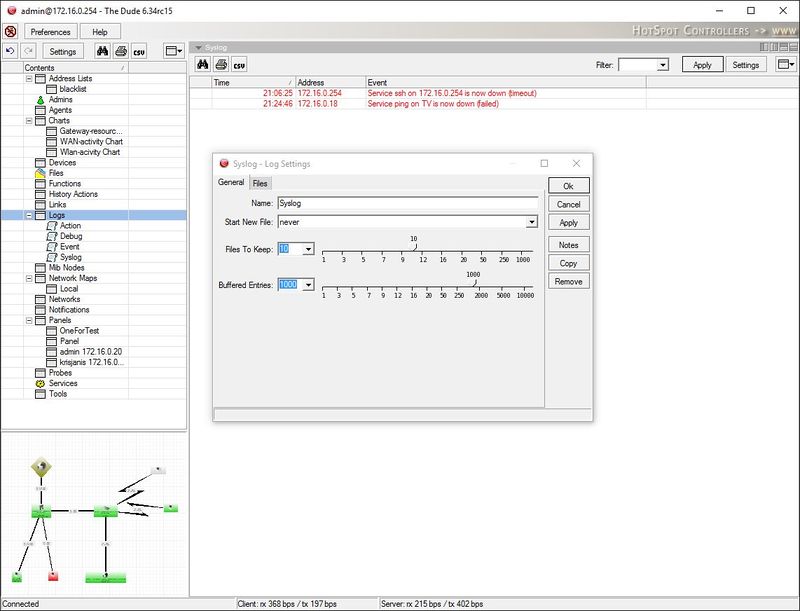Manual:The Dude v6/Syslog: Difference between revisions
No edit summary |
No edit summary |
||
| Line 10: | Line 10: | ||
The syslog also allows you to use the standard Dude [[Manual:The_Dude_v6/Notifications|Notifications]] for specific incoming logs. | The syslog also allows you to use the standard Dude [[Manual:The_Dude_v6/Notifications|Notifications]] for specific incoming logs. | ||
== v6.36rc12 and older software build specific settings == | |||
Once you have enabled the Syslog server, the logs will appear in the logfile called "Syslog". You can open the file for viewing in the left side pane. | Once you have enabled the Syslog server, the logs will appear in the logfile called "Syslog". You can open the file for viewing in the left side pane. | ||
Latest revision as of 11:48, 24 May 2016
The Dude has a built-in standard syslog server, which can be turned on in the Server settings Syslog tab. It is also possible to change from the default 514 port, to some other TCP port. The Syslog works very well with the RouterOS Remote logging ability.
The Syslog settings allows to set up rules based on source address and log line content. This allows you to filter the incoming logs, and send specific ones to specific log files, or ignore certain logs.

Note: By default, the Syslog settings contains one rule - accept all incoming logs, and save them to the Syslog log file. This can be changed
The syslog also allows you to use the standard Dude Notifications for specific incoming logs.
v6.36rc12 and older software build specific settings
Once you have enabled the Syslog server, the logs will appear in the logfile called "Syslog". You can open the file for viewing in the left side pane.
You can also configure auto-splitting of the log file:


